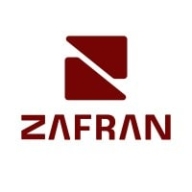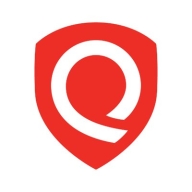


Qualys VMDR and Alert Logic MDR compete in the vulnerability management and threat detection categories. Both products excel in their respective domains, with Qualys VMDR leading in vulnerability management due to its comprehensive scanning and detailed reporting, while Alert Logic MDR is preferred for its effective threat detection and response capabilities.
Features: Qualys VMDR offers extensive vulnerability management, asset tagging, and integration capabilities, with top-rated features like comprehensive scanning and automated solutions. Alert Logic MDR provides effective intrusion detection and a streamlined dashboard, offering users a centralized view of threats.
Room for Improvement: Qualys VMDR could enhance its user interface, API speeds, and platform integration. Users note issues with false positives and complex reporting. Alert Logic MDR needs improvement in user menu navigation, error tracing, and EDR integration, with a more intuitive user experience being desired.
Ease of Deployment and Customer Service: Qualys VMDR offers flexibility across various cloud environments, but mixed user feedback on customer service suggests support response times could improve. Alert Logic MDR is appreciated for its responsive service, though there's room for better handling of complex issues for both products.
Pricing and ROI: Qualys VMDR is seen as costly but justified by its robust features, providing substantial ROI through improved security posture. Alert Logic MDR offers competitive pricing and is noted for value, particularly for large organizations. Both solutions offer significant ROI through effective threat mitigation.
| Product | Market Share (%) |
|---|---|
| Qualys VMDR | 6.4% |
| Zafran Security | 1.0% |
| Fortra's Alert Logic MDR | 0.6% |
| Other | 92.0% |



| Company Size | Count |
|---|---|
| Small Business | 4 |
| Midsize Enterprise | 2 |
| Large Enterprise | 6 |
| Company Size | Count |
|---|---|
| Small Business | 20 |
| Midsize Enterprise | 12 |
| Large Enterprise | 69 |
Zafran Security integrates with existing security tools to identify and mitigate vulnerabilities effectively, proving that most critical vulnerabilities are not exploitable, optimizing threat management.
Zafran Security introduces an innovative operating model for managing security threats and vulnerabilities. By leveraging the threat exposure management platform, it pinpoints and prioritizes exploitable vulnerabilities, reducing risk through immediate remediation. This platform enhances your hybrid cloud security by normalizing vulnerability signals and integrating specific IT context data, such as CVE runtime presence and internet asset reachability, into its analysis. No longer reliant on patch windows, Zafran Security allows you to manage risks actively.
What are the key features of Zafran Security?
What benefits can users expect from Zafran Security?
In industries where security is paramount, such as finance and healthcare, Zafran Security provides invaluable protection by ensuring that only exploitable vulnerabilities are addressed. It allows entities to maintain robust security measures while allocating resources efficiently, fitting seamlessly into existing security strategies.
Fortra's Alert Logic MDR specializes in threat detection and response with features like log access and user-friendly notifications. It is used primarily in extensive e-commerce deployments for network protection.
Fortra's Alert Logic MDR provides a unified interface with comprehensive search capabilities, immediate log access, and efficient reporting tools. Users benefit from accurate scanning, automated security warnings, and rapid response times, supported by SOCs for global visibility. The technology employs human expertise for enhanced threat detection and prevention, with a hardware setup designed to avoid virtual environment issues. However, there's a need for improved error tracing, intuitive navigation, and stronger analytical automation within the platform. Enhancements in setup documentation and user interfaces are desired, alongside demands for a built-in EDR and better alert management systems.
What are the key features of Fortra's Alert Logic MDR?Fortra's Alert Logic MDR is widely implemented across public and private sectors for robust network protection. It supports large-scale e-commerce operations, offering advanced detection capabilities with AI and machine learning. Security scanning, intrusion detection, and vulnerability analysis in Kubernetes are key applications.
Vulnerability Management, Detection, and Response (VMDR) is a cornerstone product of the Qualys TruRisk Platform and a global leader in the enterprise-grade vulnerability management (VM) vendor space. With VMDR, enterprises are empowered with visibility and insight into cyber risk exposure - making it easy to prioritize vulnerabilities, assets, or groups of assets based on business risk. Security teams can take action to mitigate risk, helping the business measure their actual risk exposure over time.
Qualys VMDR offers an all-inclusive risk-based vulnerability management solution to prioritize vulnerabilities and assets based on risk and business criticality. VMDR seamlessly integrates with configuration management databases (CMDB), Qualys Patch Management, Custom Assessment and Remediation (CAR), Qualys TotalCloud and other Qualys and non-Qualys solutions to facilitate vulnerability detection and remediation across the entire enterprise.
With VMDR, users are empowered with actionable risk insights that translate vulnerabilities and exploits into optimized remediation actions based on business impact. Qualys customers can now aggregate and orchestrate data from the Qualys Threat Library, 25+ threat intelligence feeds, and third-party security and IT solutions, empowering organizations to measure, communicate, and eliminate risk across on-premises, hybrid, and cloud environments.
We monitor all Vulnerability Management reviews to prevent fraudulent reviews and keep review quality high. We do not post reviews by company employees or direct competitors. We validate each review for authenticity via cross-reference with LinkedIn, and personal follow-up with the reviewer when necessary.